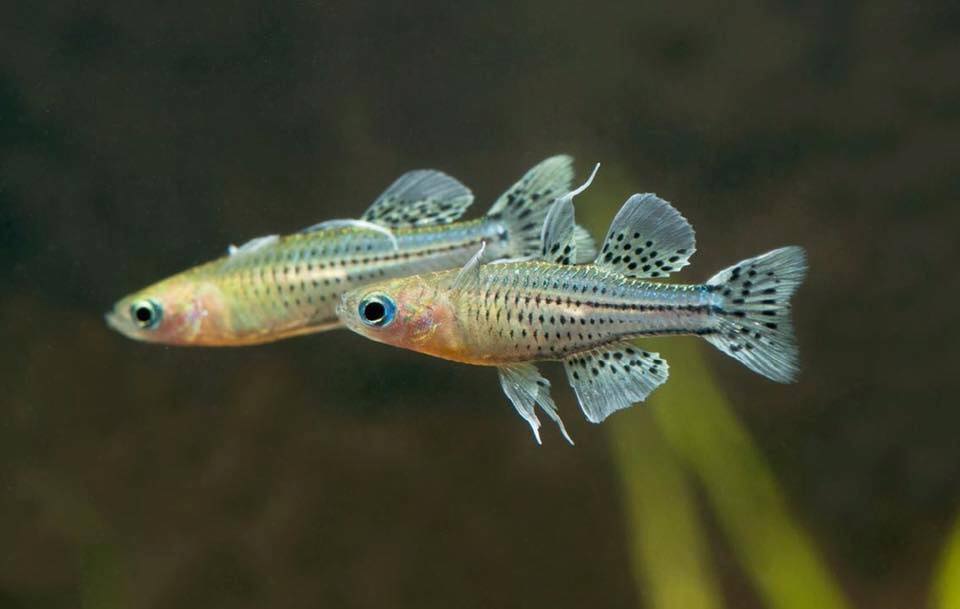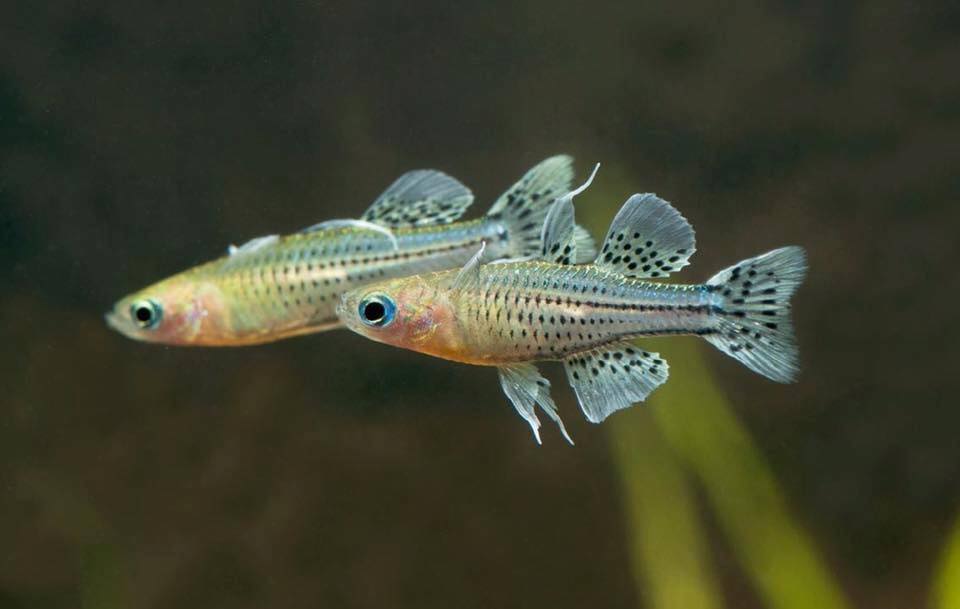Blue Eye - Spotted "Etty Bay Locale" (Pseudomugil gertrudae)
Blue Eye - Spotted "Etty Bay Locale" (Pseudomugil gertrudae)
Couldn't load pickup availability
The spotted blue-eye is a species of fish in the family Pseudomugilidae. It is native to Papua New Guinea and northern Australia. It adapts readily to captivity and can be kept in a small freshwater aquarium.
Habitat
Shows a preference for shallow, marginal zones of heavily-vegetated, slow-moving or standing waters of creeks, small streams, lakes, billabongs, and swamps, and is often found among macrophytes, submerged woody structures such as fallen branches or tree roots, or leaf litter.
At some localities the water is stained dark brown with tannins and has very low pH and dissolved nutrients, while at others it may be transparent.
In both cases the most favourable habitats feature surface vegetation of some kind, either floating or growing up from the substrate.
Tappin (2010) gives the following ranges of parameters based on those taken from various localities: temperature 12 – 34 °C, pH 3.68-9.4, conductivity 12 – 646 µS/cm, hardness 0-320 ppm, alkalinity 2-180 ppm.
Maintenance
Best kept in a densely-planted tank and an excellent choice for the carefully-aquascaped set-up.
The addition of some floating plants and driftwood roots or branches to diffuse the light entering the tank also seems to be appreciated and adds a more natural feel.
If you wish to raise fry alongside the adults the addition of fine-leaved aquatic moss such as a Taxiphylum sp. is advisable (see ‘Reproduction’).
The water should be well-oxygenated and a degree of flow is advisable. Do not add this fish to a biologically immature aquarium as it can be susceptible to swings in water chemistry.
Water Conditions
pH: 4.5 – 7.5
Hardness:90 – 215 ppm
NB: suggested ranges are for the ornamental strain. Wild specimens from specific localities may require particular conditions, especially those inhabiting oligotrophic blackwater environments.
Diet
Feeds chiefly on floating or suspended zooplankton, phytoplankton, and invertebrates in nature, and in the aquarium must be offered items of a suitable size.
Ideally much of the diet should comprise live foods such as Daphnia, Moina, Artemia nauplii, micro worm, etc., although small/crushed floating dried foods are also accepted.
Behaviour and Compatibility
Peaceful but unsuitable for the general community aquarium since it’s easily outcompeted and quite timid.
It’s best maintained alone or alongside fishes of comparable size, disposition, and requirements and freshwater shrimp of the genera Caridina and Neocaridina but in all cases be sure to research your choices thoroughly prior to purchase.
P. gertrudae is a shoaling species and should be kept in a group of at least 8-10 specimens, ideally more. Maintaining it in such numbers will not only make the fish less nervous but result in a more effective, natural-looking display.
Males will also display their best colours and some fascinating behaviour as they compete with one other for female attention.
Share

